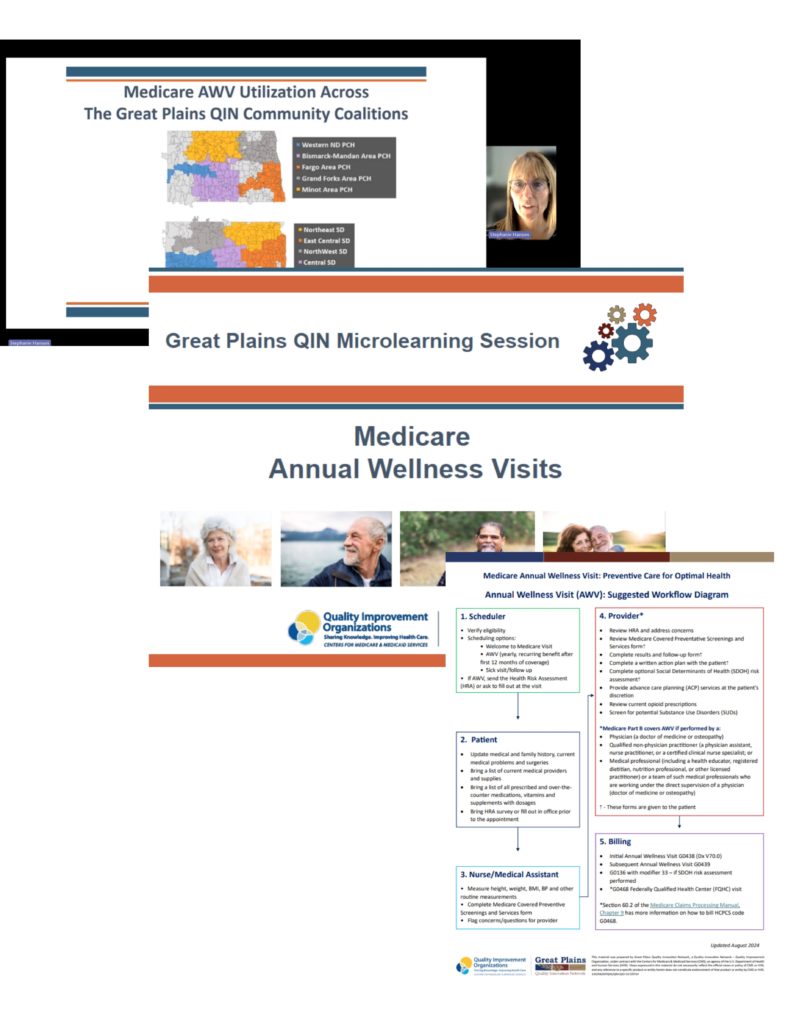
An Annual Wellness Visit (AWV) is a preventive visit designed to help patients update their medical providers about their current health status. During an AWV, a patient answers questions in a health risk assessment (HRA) to update their personalized prevention plan.
Medicare AWVs are essential for proactive healthcare. These visits offer opportunities to identify potential health problems early, implement preventive measures to maintain good health and prevent disease, and enhance overall well-being for patients.
Data from Traditional Medicare Claims shows utilization of the AWV is very low in North Dakota and South Dakota communities; 29.39% at the highest rate and some communities were as low as 4.25%.
Access the 15 minute micro-learn session, led by Stephanie Hanson, RN, BSN; quality improvement advisor with Great Plains QIN. Hanson does an excellent job of outlining the AWV components, the optional elements of the AWV (including advance care planning and a social determinants of health risk assessment) as well as tools and resources to assist with application and implementation.
 Access the 15 minute micro-learn session, led by Stephanie Hanson, RN, BSN; quality improvement advisor with Great Plains QIN. Hanson does an excellent job of outlining the components of the AWV, the optional elements of the AWV (including advance care planning and a social determinants of health risk assessment) as well as tools and resources to assist with application and implementation.
Access the 15 minute micro-learn session, led by Stephanie Hanson, RN, BSN; quality improvement advisor with Great Plains QIN. Hanson does an excellent job of outlining the components of the AWV, the optional elements of the AWV (including advance care planning and a social determinants of health risk assessment) as well as tools and resources to assist with application and implementation.
The Great Plains QIN team also created a workflow which outlines the various roles of team members implementing the AWV.
Medicare Annual Wellness Visit: Preventive Care for Optimal Health
One of the most valuable elements of the AWV is the creation of a long-term preventive care plan based on the information a patient shares with their provider. The AWV can detect/prevent disease early and encourage interventions to sustain maximum wellness and help keep people out of the hospital.
It’s important to note that the specific benefits of AWVs may vary depending on individual health needs and risk factors. However, for most individuals, these visits serve as an important cornerstone of preventive healthcare.

